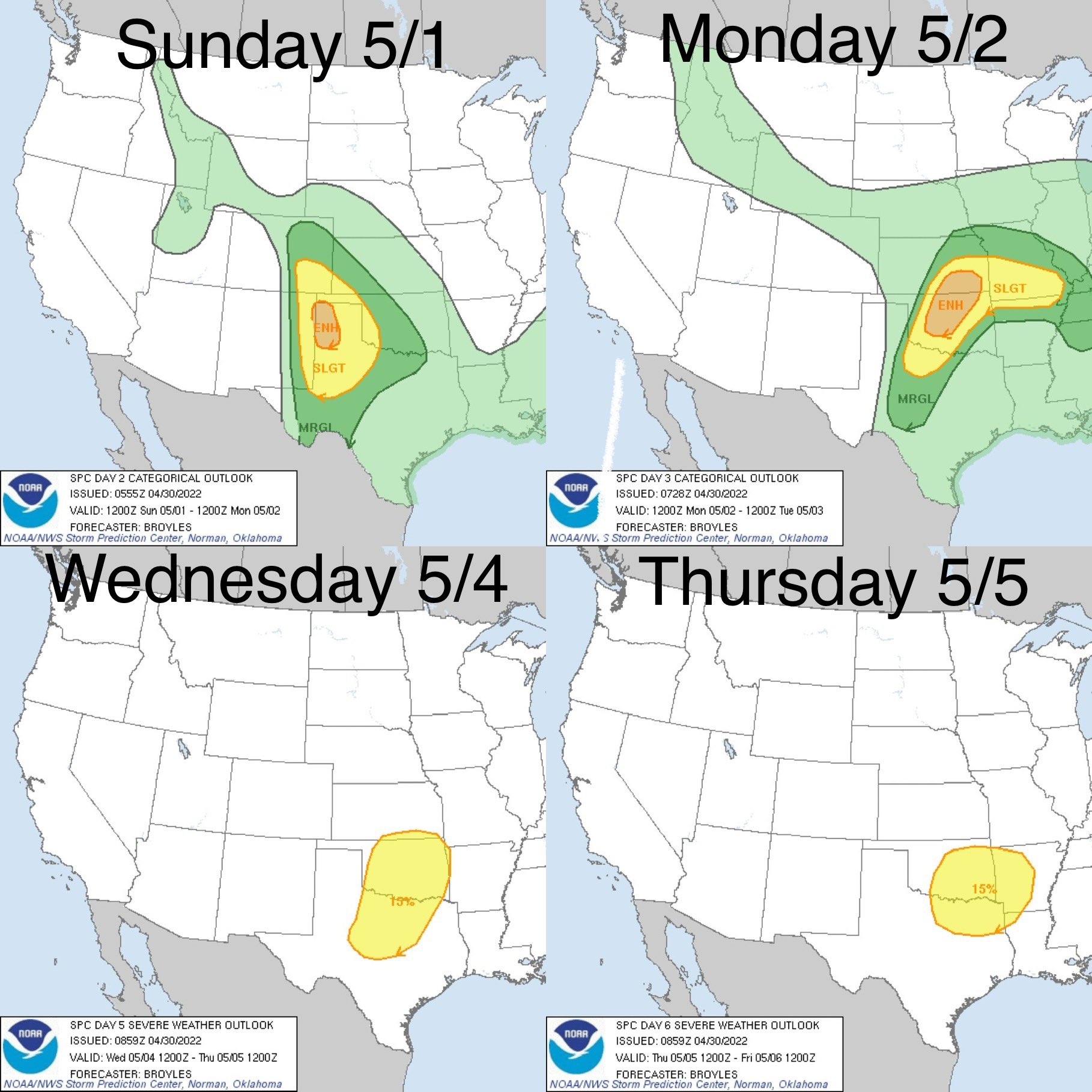What the heck is the “cap” anyway?

As we get into severe season for the Plains, the term “cap” is going to come up practically every outlook.
The cap is simply a pocket of warmer air above the surface. Typically the air cools as you rise in the troposphere but an inversion is an area where the opposite is true. These typically show up in the morning in the Southeast, as cooler denser air aloft falls to the surface and a warmer layer sits above it. It’s visually apparent when you have fog.
The cap ends up playing two roles in those Plains severe weather set ups. The first is that it keeps a lid on convection early and lets the surface layer heat up. This builds more overall instability, so that once the cap breaks they have more potential energy to work with. Typically this means only the strongest updrafts end up breaking through, leading to stronger storms and fewer storms to interfere with one another.
The second function is that sometimes the cap does not break and you don’t get storms despite a bunch of shear and high overall instability.

How Is The Cap Formed?
There are a few ways to make a cap:
- Cooling at the surface at night
- Sinking air aloft
- Warm air advection above the surface
Cooling At The Surface: Radiational Cooling Cap
This is the opposite of the daytime heating mechanism. The surface of the earth cools down at night through longwave radiation leaving the surface. This means the ground cools off faster than the air. Air close to the ground will be cooled by the cold ground but air farther up won’t feel the same effect. This leads to cold air near the surface and warmer air aloft.
You see it at max effect near daybreak, as one might expect. If the ground cools enough, you’ll have the air in the near ground layer get to the dew point and condense. This makes fog on those calm cold mornings around the Southeast (and everywhere calm cold mornings can happen).

Sinking Air Aloft
This is how we get those hot and humid days in the Southeast during the summer that don’t produce afternoon thunderstorms. We’ll have a ridge overhead that promotes air to sink, and air warms as it falls just as it cools as it rises. This leads to a layer of very warm air sitting above the unstable airmass just at the surface that doesn’t allow it to rise. These days tend to have poor air quality as well, since the near surface layer isn’t allowed to mix, pollutants and ozone get stuck in the breathing layer.
Warm Air Transport At Elevation

The makings of the classic Plains capping inversion is generally through the warm air advection method. What happens is the sun warms the surface in the mountains and high plains of CO, WY, NM, and even far western Texas and Oklahoma. This airmass is typically dry, so it is not storming it’s self out and cooling off due to the warming. Westerly winds carry the air at the elevation of its source over the Plains. This leaves a pocket of warm air aloft. Warm moist air gets pushed under it and builds instability.
Breaking The Cap: Warm Below or Cool The Layer
When watching those Plains severe events start to unfold, the question is always when will the cap break?
There are two main ways to see the cap break. Either the surface is warmed enough that it is now warmer than the temperature max of the cap. Thus, the air is buoyant enough to lift through the cap. The cap might also be cooled by transport of cooler air in at the layer the cap is present in.
Warm The Layer Below The Cap.
If the cap is just having warmer air above the surface layer, just warm the surface layer enough and it won’t be cooler any longer. Even if the cap isn’t smashed through, the attempts at breaking the cap and failing will also help to make the cap erode. You’ll get localized mixing of the layer with the cooler layer below. The evaporation also serves to cool the layer a little as well. In short, let the sun heat the ground enough and eventually you’ll have enough hot moist air to break through.

Cool The Capping Layer
Cold air advection blowing in colder air at the capping level can also be a means of breaking the cap. If that layer is warmer than the surface, cooling it off will help make it colder. Yes, these are the insights you rely on me for. Couple that with daytime heating and a little dynamic help to get vertical motion, and you can have the cap break and take advantage of the vast amounts of instability that was built below.
tl;dr version

Let’s review.
The “cap” is a layer of warmer air above cooler air at the surface that stops storms from rising. Above the cap is typically an unstable elevated mixed layer. Below the cap is also unstable. The cap allows for instability to build at the surface. This means more explosive thunderstorms later, if the cap can be overcome.
They can form in numerous ways. At night from the surface cooling the near surface air. From a high pressure causing air to sink aloft. The most famous cap, the one over the Plains during severe season, forms from warm air being transported in aloft.
The cap can be broken in a few ways. The surface can warm enough to be warmer than the capping layer. There can also be upward motion due to an upper low moving in that makes the layer rise and cools it. Colder air can also be transported in at that layer to cool it. Once the cap breaks, the hailstones will fall.
That’s all for this Severe 101.


